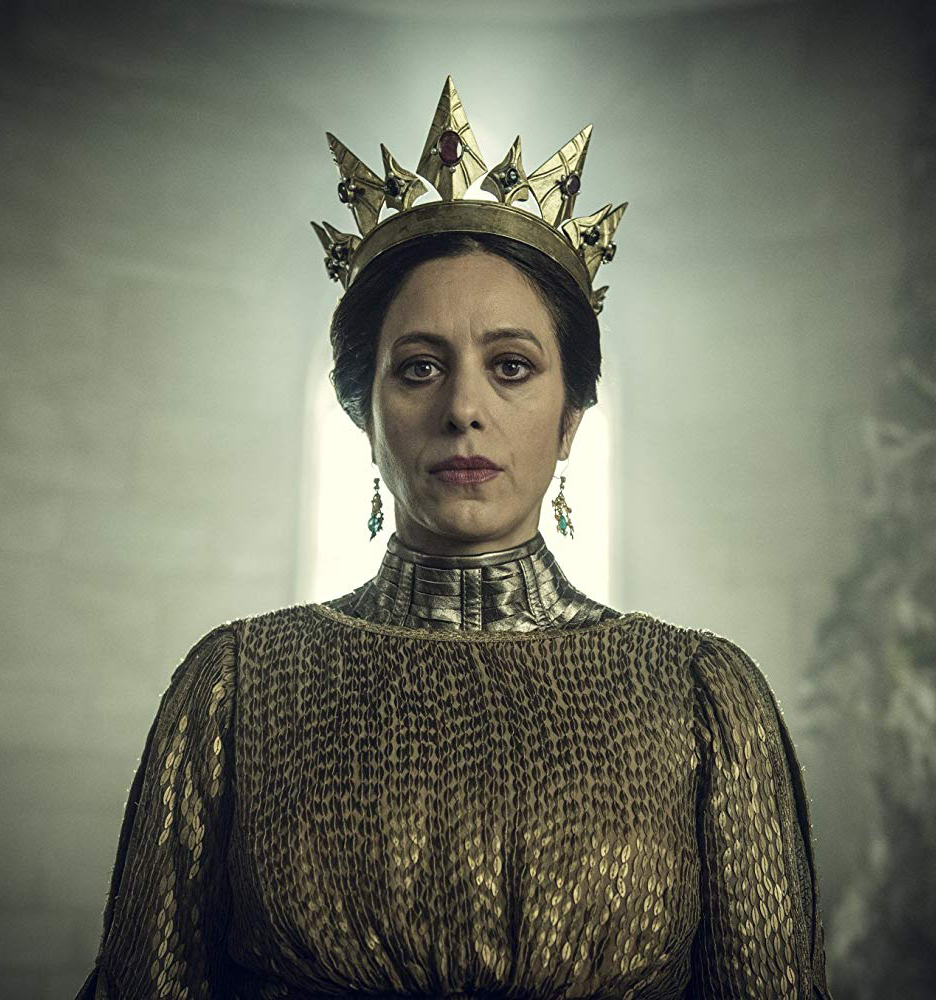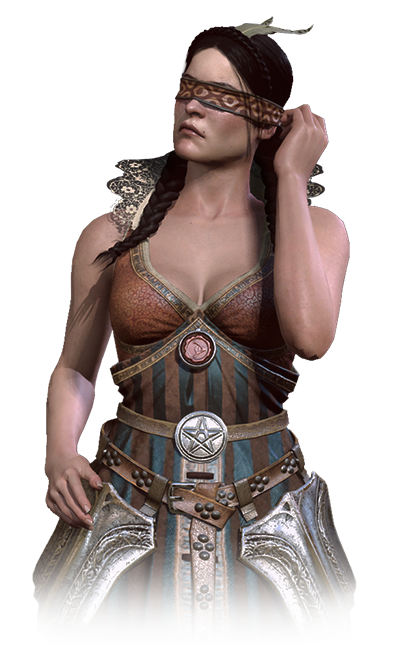It’s 2020, and The Witcher and its world are as popular as ever. It was only back in December that The Witcher hit Netflix and since then the world has exploded with an insatiable hunger for absolutely everything related to the franchise. While some are content to wait for season two of the show, others have flocked to CD Projekt Red’s The Witcher 3: Wild Hunt, which originally released back in 2015. The game has faced a huge surge of popularity thanks to audiences being drawn to a world that they still want more of—and not just audiences of the white male variety either.
Women have always liked The Witcher 3, even if they share a blatant distaste for some of the earlier games’ practices, such as the oversexualization of female characters through and sexist storylines. But one thing that has become more noticeable since the show, is how many more women are creating their own content based on the TV series. Even something as simple as Twitter threads—where female fans are able to express their delight at seeing female characters who not only look like them but are just as important to the story as main character Geralt—has become much more prominent since the TV show was released.
Women finding comfort within the TV show isn’t all that odd. While The Witcher 3 does some excellent characterization with characters like Triss, Yennefer, and Ciri by allowing them to be fleshed out women instead of “women who are closely linked to Geralt,” the series started off on a particularly bad foot by gamifying sleeping with women by letting Geralt collect “sexcards” of the women he has “conquered.” It’s since become a notorious mechanic and one that thankfully does not make a reappearance in the third game. For some, however, the damage has already been done, such as with Megan Cartwright, a Tumblr user who has only watched the TV series but has developed a taste for role-playing a female Witcher original character through collaborative fan-fiction on Tumblr, explaining to me that while she has just watched the show, she “doesn’t plan to get into the game” because of how “overtly sexualized the female characters are.”

Credit: CD Projekt
“I know that the women in the games aren’t just sexual characters there solely to be sexualized, but the way most fawn over Geralt makes me kind of uncomfortable,” Cartwright explains. “From what I’ve watched on YouTube, Geralt can be played as a real misogynistic dickbag, or someone who is extremely kind, but even then I fail to see the joy in playing a character who every woman in the game seems to want to bang. It plays to a power fantasy that I just can’t get behind.” Of course, as Cartwright herself acknowledged during our conversation, there are some characters within the The Witcher games that don’t fawn over Geralt. Philippa Eilhart, a character who identifies as a lesbian in the games, feels almost nothing but disdain for Geralt. But she is one of few, especially compared to the female characters within The Witcher Netflix series.
“In the Netflix series, Geralt is Henry Cavill—so you just know he’s attractive—but it isn’t shoved in our face every time Geralt meets a character who happens to be female. Queen Calanthe, Téa, Véa, Pavetta and Zola are just a few that come to mind that aren’t at all bothered about Geralt’s looks. What matters is their role in the story, not whether or not they have a sexual relationship with Geralt. I just think it’s easier for women to feel more comfortable with the world shown in the Netflix series and why I prefer my Witcher to interact with characters who I recognize from the show rather than the game.”

Credit: Netflix
To a certain extent, Cartwright has a point about the sexualization of women within the game, but that doesn’t negate the fact that the three loves of Geralt’s life—Yennefer, Triss, and Ciri—all do play a significant part in The Witcher 3. Yennefer is an incredibly powerful sorceress from humble beginnings and is a mother figure to Ciri. Triss is not just an incredible sorceress as well, but plays a key part in the fight against the Church of Eternal Fire, a group that ostracized any who it considered abnormal, such as sorceresses and elves. And Ciri? Ciri is one of the most powerful beings within The Witcher’s world and someone who Geralt loves deeply as though she was his own flesh and blood. While the game does have problems with the “overt sexualization” of these characters, it would be false to state that fulfilling the male gaze is their only purpose within the series.
Elizabeth Ballou, a game designer and freelance writer who’s both played the games and watched the series, feels that the Netflix series makes particular strides in its portrayal of Yennefer when compared to CD Projekt Red’s version. “[The series] shows that, at one point, Yennefer had a complex and hate-filled relationship with her body. Her village hates her because of the way she looks, and she internalizes that hatred,” she says. “What woman can’t, on some level, identify with that?”
Yennefer in the show goes on to become more conventionally attractive. She not only goes through major magical surgery, but she does without anesthetic and we, the audience, have no choice but to watch the torture she endures in order to become more conventional for the rest of the world. “Why wouldn’t she? I know I would,” Ballou says. “It’s a pretty on-the-nose comparison to things like plastic surgery and extreme dieting, but it translates much better to our world than the pixelated Yennefer in The Witcher 3, who doesn’t much reflect on her self-created beauty. In our world, people with the right bodies get introduced to the right people, who give them the right jobs. And this is not just cynicism—women who are considered more conventionally attractive and wear makeup are more likely to get ahead. It’s the attractiveness bias at work.”

Credit: Netflix
Yennefer’s struggles are faithful to how she is portrayed in Andrzej Sapkowski’s Witcher book series, but instead of it being locked behind lore codexes and quests, the Netflix series gives it the attention it deserves. The same can be said for Ciri who, if you’ve only played The Witcher games, gets minimal attention in comparison to other female characters like Triss and Philippa Eilhart. In the show, we see Ciri’s beginnings and learn more about who she was before she became the person we see in The Witcher 3. Again, this is largely due to the TV series having the space to focus on characters that aren’t Geralt, and thus give them the time and energy that they deserve.
Of course, the show isn’t perfect in how it handles its female characters. Ballou feels that Yennefer’s scenes with the djinn, where she tries to make herself fertile again, are “exploitative of her body in the same way that The Witcher 3 was. She’s mostly nude, and there are a bunch of shots of her arching her back in an almost orgasmic way. It’s a sexy scene… which makes no sense if we are to believe that this is Yennefer trying to get the thing she wants most. The more she’s objectified and sexualized, the less we are able to believe that she is powerful, self-sufficient, and not in need of Geralt’s help.”

Credit: CD Projekt
Nor does the The Witcher Netflix series fare particularly well when it comes to breaking away from heteronormativity. Yes, there are women kissing other women in the background and having sex, but it feels wildly performative rather than something that actually allows for any positive, meaningful LGBT+ representation. The games at least had Philippa, who has yet to make an appearance in The Witcher Netflix series.
However, it isn’t all bad. With the Netflix series, creator Lauren Schmidt Hissrich has at least taken steps to make the world of the Witcher actually feel like a world with a variety of people, allowing for a more diverse telling of Geralt and co.’s stories. In particular, the show handles race in a way that’s different from what we know of from the games and books by actually including characters that aren’t just white. It’s part of what what makes the world so compelling, and as Natalie Flores, freelance writer and avid Witcher fan, tells me, it helps that the diversity extends to the main cast as well.
“I really appreciate that Yennefer in the TV show is brown,” Flores says. Players and readers of The Witcher series will know that Yennefer, like most characters within that universe, is portrayed as being a white woman. “While The Witcher universe accounts for race differently than our world, that’s not necessarily what’s most important. It’s vital to recognize what Yennefer being a woman of color signifies in our world. She’s a brown woman who is extremely powerful, desirable, selfish, afraid to be vulnerable, flawed, ambitious, and complex in all the ways that most white women get to be in the media, but that women of color are often not allowed to also be.”
With this sort of representation in mind, women writers, artists and even roleplayers are able to feel more at ease. It’s not hard to find a female Witcher original character online anymore, and The Witcher 3 has also hit on a new popularity thanks to the show introducing new people to its world. In fact, with CD Projekt Red and Andrzej Sapkowski recently re-upping their deal—and thus the possibility there will be more games set in The Witcher’s world—the chance of having more women like those presented within the Netflix series doesn’t seem too much of a pipe dream anymore. And even if that never comes to pass, the fact that women have become more comfortable in existing in a world that they were at odds with beforehand is still something to be celebrated.
Header image: Netflix

Aimee Hart is the Deputy Editor of Gayming Magazine and specializes in video games, tabletop, anime and trying her best.